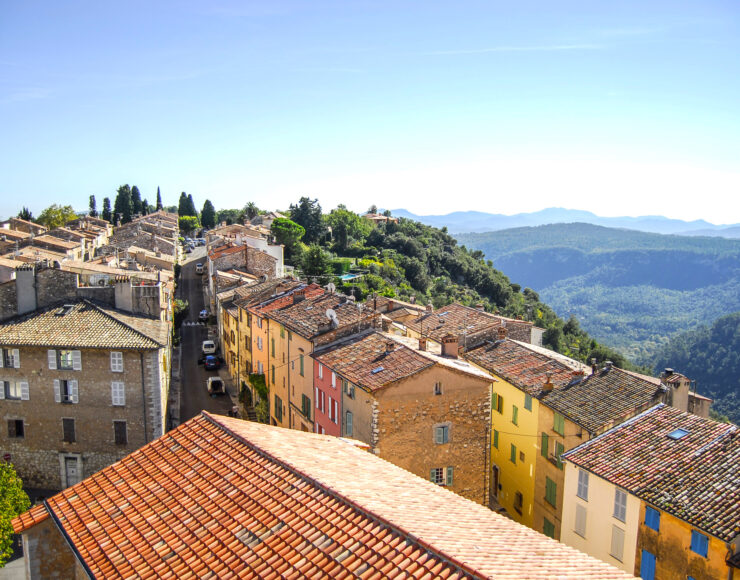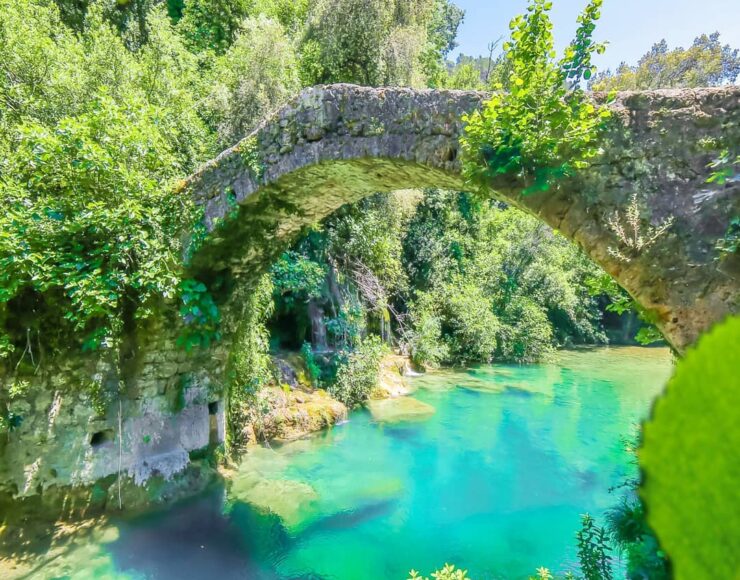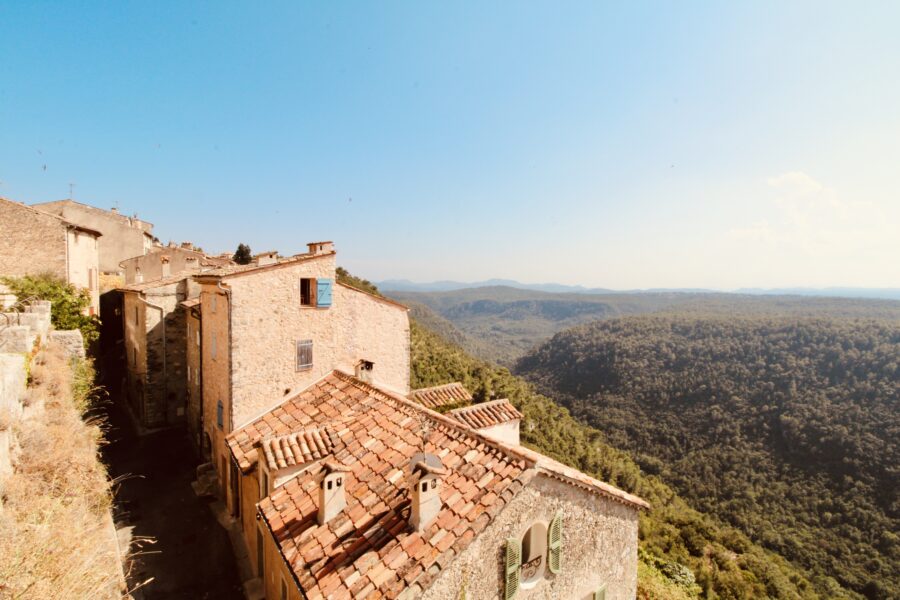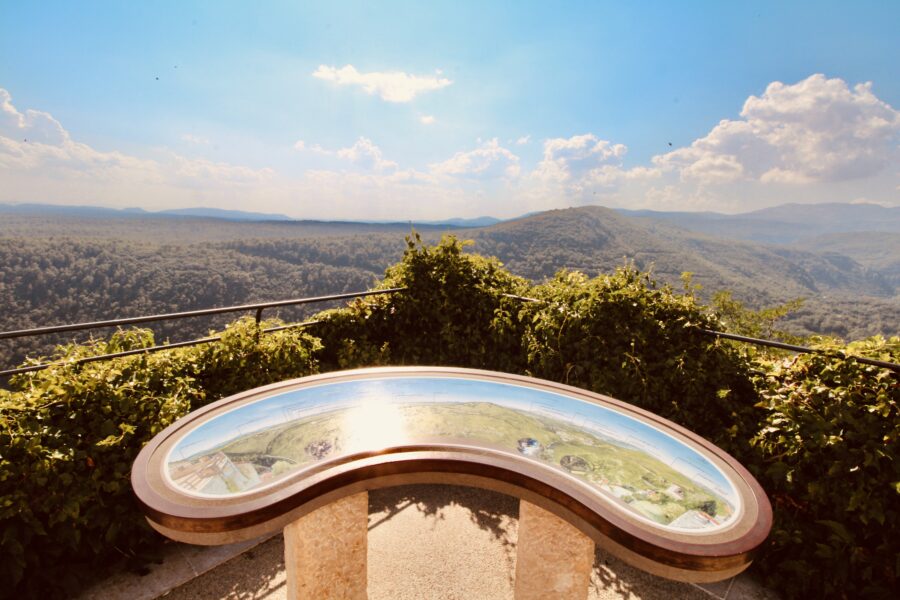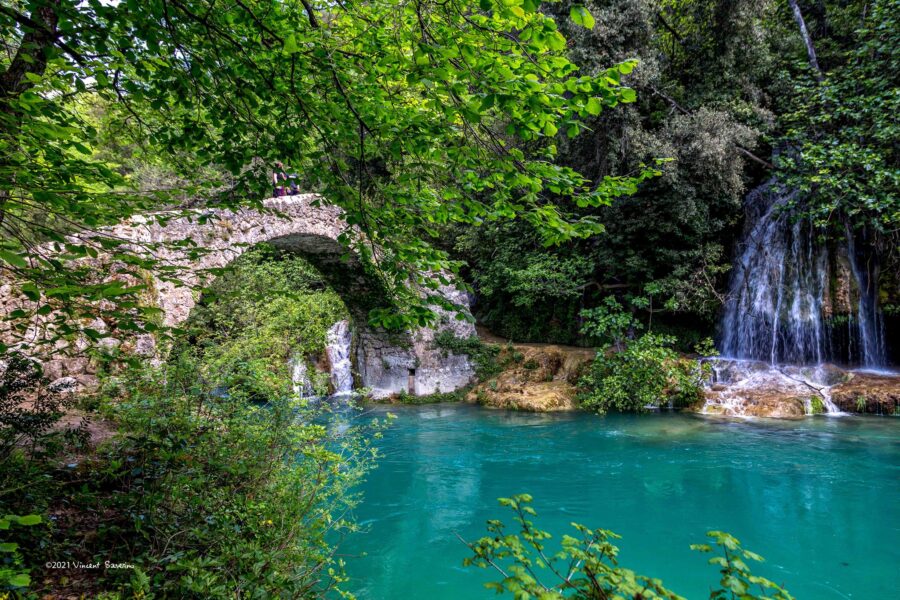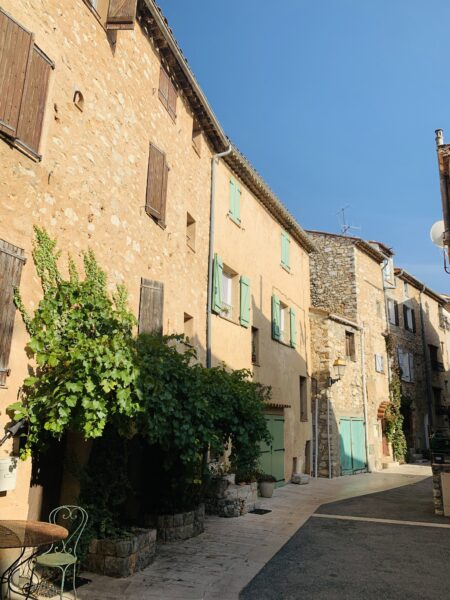Saint-Cézaire-sur-Siagne
Saint-Cézaire-sur-Siagne, à l’écart des grands axes (16 km de Grasse et 30 km de Cannes), est un village préservé, fièrement perché sur sa falaise, qui domine la vallée sauvage de la Siagne et déroule ses restanques plantées d’oliviers, jusqu’au fleuve admirablement limpide et bien encaissé dévoilant sur son parcours cascades, moulins, vieux ponts, ainsi qu’une faune et une flore aux espèces parfois uniques.
Ce beau village offre la quiétude et le farniente estival d’un authentique village provençal avec sa place principale ornée d’une très belle fontaine dite des Mulets, son château abritant la Mairie, ses agréables restaurants aux terrasses ombragées et un panorama grandiose sur la vallée de la Siagne, les Maures et l’Estérel. Des visites guidées permettent de découvrir sa célèbre Grotte, ses dolmens et tumulus et de suivre les traces bien visibles de son passé romain et médiéval.
Réputé pour ses produits du terroir : huile d’olive, fromages de chèvre et miel, il est également un lieu propice aux activités sportives ; le choix est grand entre randonnées pédestres, escalade, spéléologie, VTT, équitation, jeu de boules, tennis, tir à l’arc ou encore parc Accrobranche.
VISITE AUDIOGUIDÉE – WIVISITES
Les incontournables
Domaine de la grotte de Saint-Cézaire
Découverte en 1890, la grotte, descendant jusqu’à 40 mètres sous terre, fut découverte fin XIXe siècle par un agriculteur qui défriche son champ. En creusant davantage, un gouffre apparaît. Des escaliers seront aménagés afin d’ouvrir la grotte de Saint-Cézaire aux visiteurs.
Réputée pour ses concrétions variées aux magnifiques couleurs, elle s’est enrichie d’une cascade lumineuse multicolore, mettant en valeur le fond du gouffre.
La chapelle Notre-Dame de Sardaigne
Datant de la fin du XIIe siècle, la chapelle fut construite par les moines de Lérins, propriétaires à cette époque de la plupart des terres du village. Elle fut l’église paroissiale jusqu’à la construction de l’église actuelle, consacrée le 7 mai 1722.
L’ensemble architectural de la chapelle Notre-Dame de Sardaigne inscrite aux Monuments Historiques est d’une rare élégance, avec son abside en « cul de four » et sa nef “en berceau brisé”. On peut y voir deux bustes reliquaires ainsi qu’un sarcophage gallo-romain.
Les puits de la Vierge
Situé en contrebas de l’école, cet ensemble rare de neuf puits fut construit à partir du XVe siècle et baptisé « Puits de la Vierge » en 1865, au moment de la construction de la colonne dédiée à la Vierge. Quatre des neuf puits sont recouverts d’une voûte hémisphérique et étaient destinés à la consommation humaine. Les cinq autres, entourés d’auges et équipés de crochets dans la pierre, étaient destinés aux animaux.
Infos pratiques
Activités & lieux de visites
Chapelle Notre-Dame de Sardaigne
Puits de la Vierge
Domaine de la Grotte de Saint-Cézaire
VTT
Rendez-vous annuels
Juin
Les allumés de la Pleine Lune
Fête de la musique
Juillet
fête médiévale
La Ruée vers l’Art
Festival de musique House
Août
Festival de Jazz
Fête de la Libération du village
Septembre
Fête patronale de la Saint-Ferréol
Décembre
Fenêtres de l’avent
Festivités de Noël
Marché
Mardi
Place Général de Gaulle
Alimentaire
Samedi
Place Général de Gaulle
Alimentaire – Artisanat
